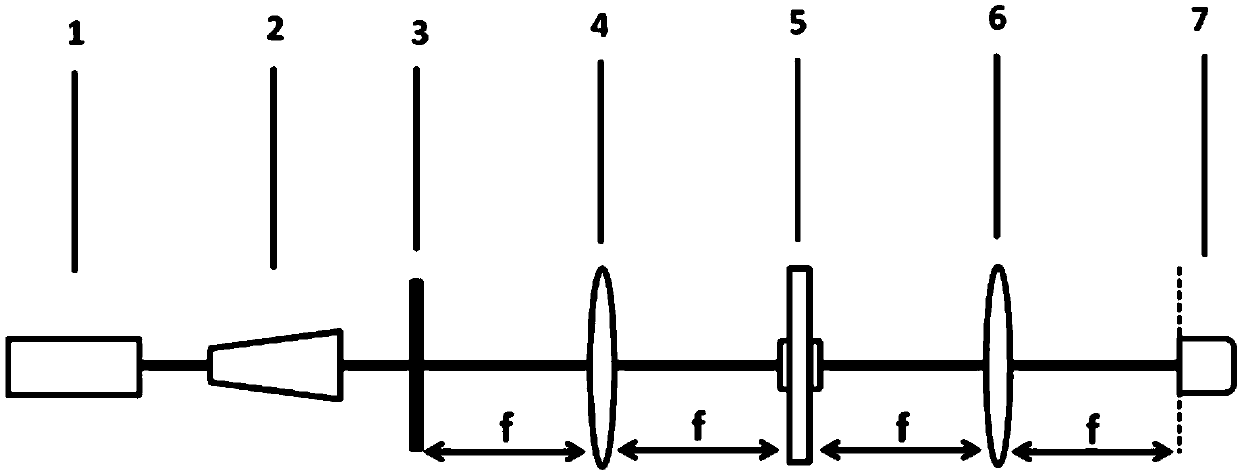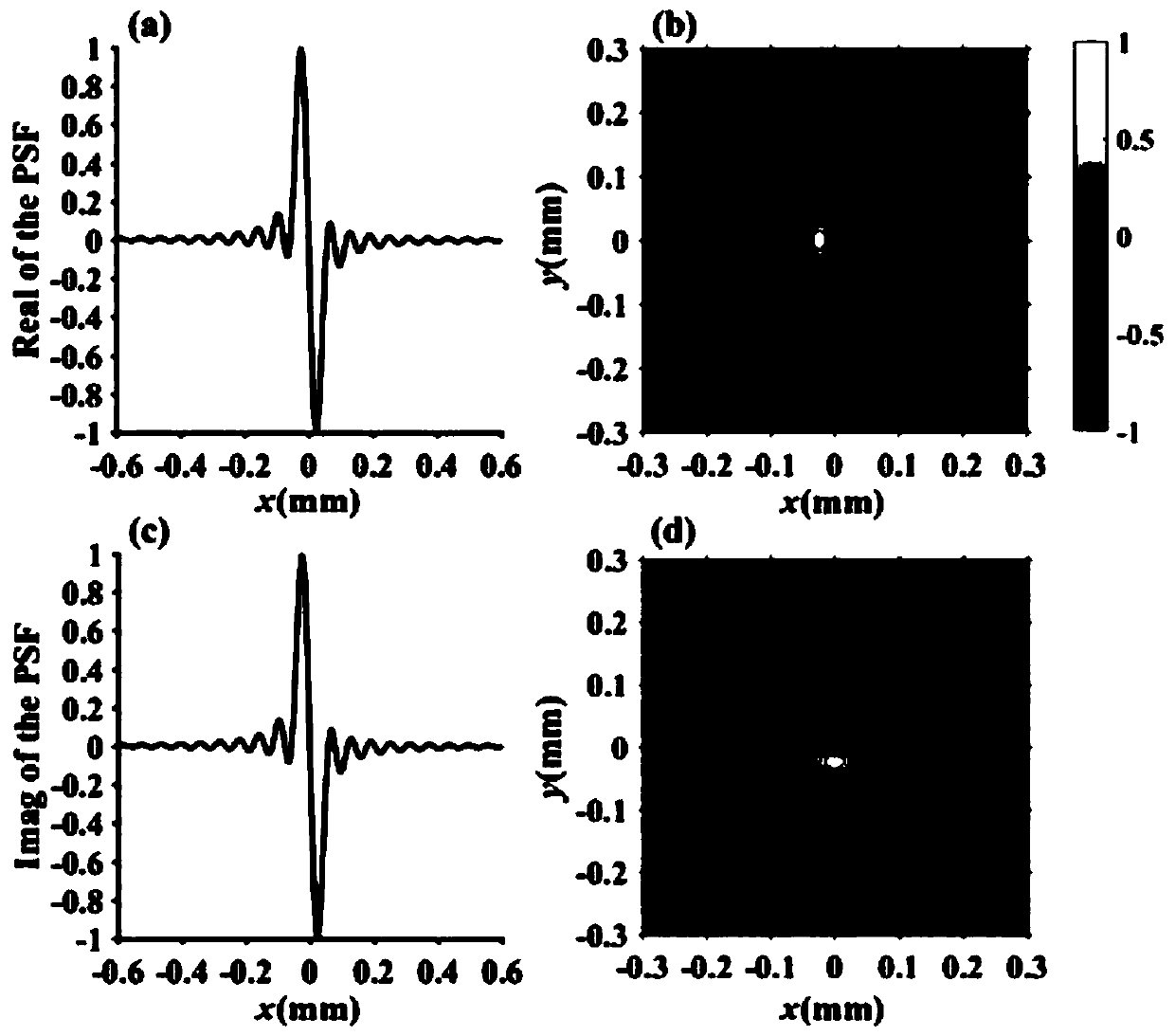Method and system for achieving edge enhancement imaging
An edge enhancement and imaging technology, which is applied in the direction of optical components, optics, instruments, etc., can solve the problems of uneven results, diffraction noise of imaging results, and poor realization of phase equivalence.
- Summary
- Abstract
- Description
- Claims
- Application Information
AI Technical Summary
Problems solved by technology
Method used
Image
Examples
Embodiment Construction
[0043] The present invention will be further described below in conjunction with the accompanying drawings and specific embodiments, so that those skilled in the art can better understand the present invention and implement it, but the examples given are not intended to limit the present invention.
[0044] The method for realizing edge-enhanced imaging in the embodiment of the present invention includes the following steps:
[0045] S11, generating a Gaussian beam;
[0046] S12. Expanding and collimating the Gaussian beam, and projecting the expanded and collimated Gaussian beam onto an object;
[0047] Specifically, the Gaussian beam is expanded and collimated by a beam expander.
[0048] S13. Performing a first Fourier transform on the light beam passing through the object;
[0049] Specifically, a first Fourier transform is performed on the light beam passing through the object through the first Fourier lens.
[0050] S14. Modulating the light beam after the first Fouri...
PUM
 Login to View More
Login to View More Abstract
Description
Claims
Application Information
 Login to View More
Login to View More - R&D
- Intellectual Property
- Life Sciences
- Materials
- Tech Scout
- Unparalleled Data Quality
- Higher Quality Content
- 60% Fewer Hallucinations
Browse by: Latest US Patents, China's latest patents, Technical Efficacy Thesaurus, Application Domain, Technology Topic, Popular Technical Reports.
© 2025 PatSnap. All rights reserved.Legal|Privacy policy|Modern Slavery Act Transparency Statement|Sitemap|About US| Contact US: help@patsnap.com



